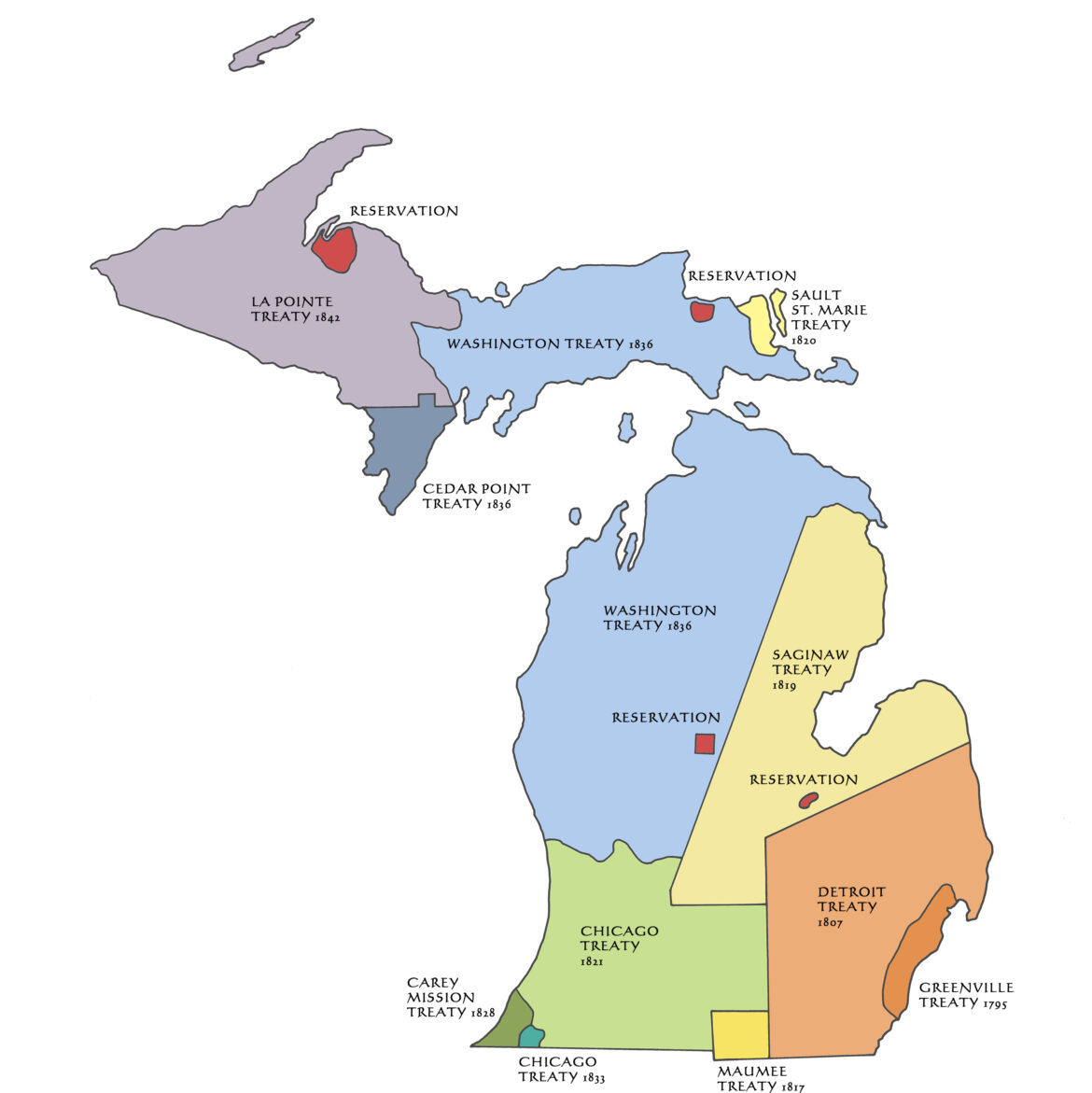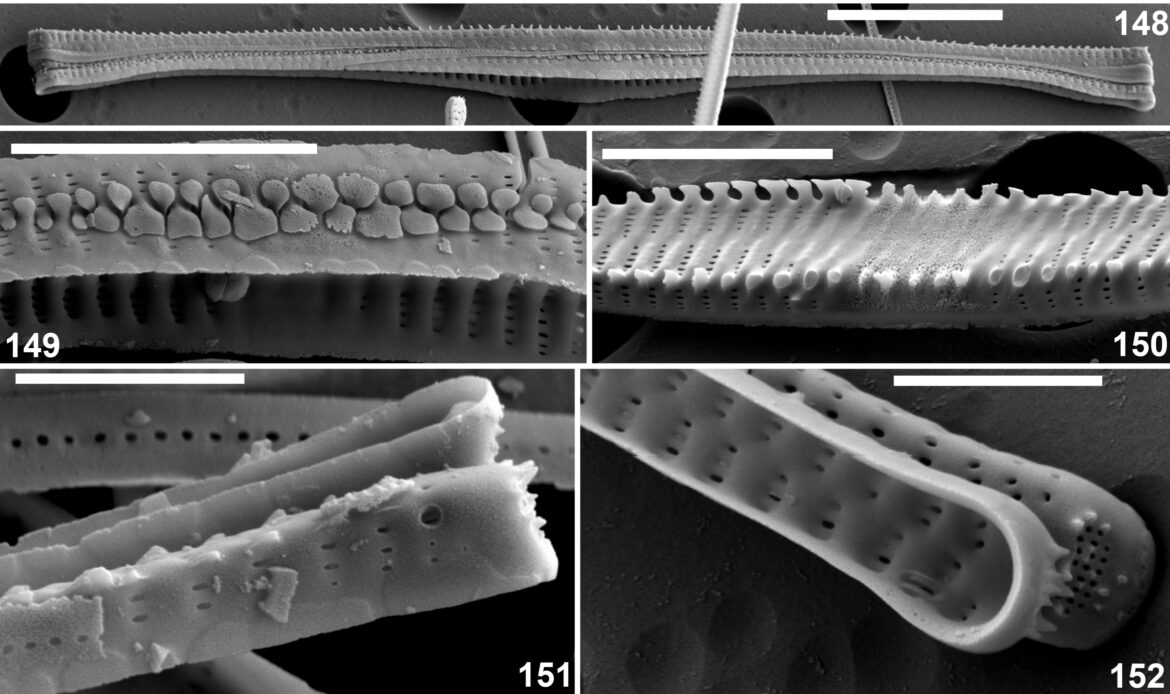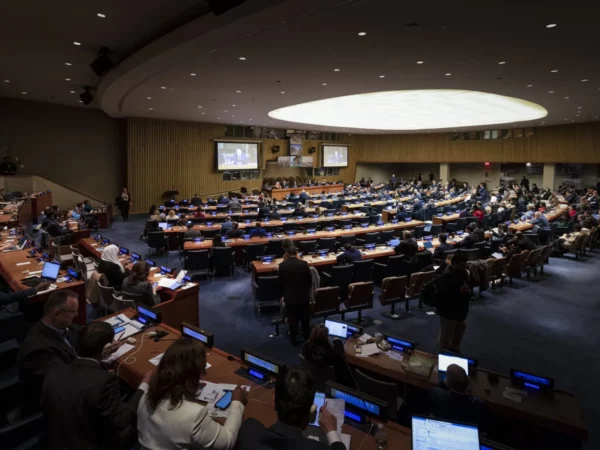
This article was republished here with permission from Great Lakes Echo.
By Kurt Williams, Great Lakes Echo
Editor’s note: This is the last in a series of stories about profound ecological changes that test our ability to manage the Great Lakes. It’s a test that comes as state and tribal officials negotiate a key agreement affecting fish and fishing for the next 20 years.
Thirteen years after the Treaty of Washington in 1836 handed over much of northern Michigan from the Indigenous people to the United States, French journalist Jean-Baptiste Alphonse Karr wrote, “The more things change, the more they stay the same.”
The pithy aphorism captures well the normalization of the continued change in the Great Lakes since the arrival of European Americans.
The Lake Michigan and Lake Huron waters governed by an 1836 treaty are at the heart of negotiations between Michigan, the federal government and Native American tribes to determine how much and what kinds of fish can be harvested by recreational, state-licensed and Native American commercial fishers.
The parties have until the end of June to update a legal agreement signed in 2000.
But much has changed since then, notably because of invasive mussels.
When most people think of changes to the Great Lakes, they note what they can see – like the green scum in the 1970s from too much phosphorus.
They also get riled up by change that impacts economic activity, as happened when sea lampreys invaded the upper Great Lakes in the 1920s and 30s. The invasion decimated native fish, leading to profound harm to the region’s economy.
“The Great Lakes Fishery Commission was formed (in 1955) through a treaty between the United States and Canada when lampreys invaded and seemed like the most serious problem in the Great Lakes,” said Mike Hansen, former chair of the commission.
But serious change has always been a constant in these waters. It was well underway long before completion of the Welland Canal allowed sea lampreys to wriggle their way around the Niagara escarpment and Niagara Falls and into the upper Great Lakes to wreak havoc on the fishery.
Read the human impact story in Great Lakes’ sediment
You don’t need a time machine to understand how different the lakes are today than they were in the 1920s when commercial fishing was a major economic driver.
But change created by human activity was underway even before the signatories to the Washington Treaty ink dried in Washington D.C. in March 1836.
The evidence of our impact may be unseen, but it is preserved to this day in the lake bottom.
“We know that the Great Lakes are nothing like they were 300 years ago,” said Euan Reavie, senior research associate at the University of Minnesota, Duluth.
Reavie specializes in paleolimnology, looking at changes in diatoms – tiny plants living in the lakes that form the base of the food web.
When diatoms die, they accumulate in the lake bottom sediments. Reavie and his team reconstruct the past environment of the lakes by studying the remains of dead diatoms.
“I include diatoms as a primary indicator because they tend to be the most reliable,” Reavie said.
Because they sit at the base of the food web, they don’t just tell you about water quality, they tell you about the biology and ecology of the system and how it has responded to stress and changes, he said.

Diatoms similar to some of those evaluated to follow changes in the Great Lakes are seen in these images taken with an electron microscope. (Photo Credit: Elizabeth Alexson, Bart Van de Vijver, Carlos Wetzel, Luc Ector and Holly Wellard Kelly)
There’s been a lot of change to the lakes over many years that’s written in the sediments, but first you’ve got to pull them out of the lake bottom to read it.
Using an EPA ship, the Lake Guardian, Reavie reaches sediments deep in the lakes, pulling up cores for analysis.
Sampling a Great Lakes milkshake
Getting them is like sticking a straw in a milkshake, he said. You can’t pull milkshake up with a straw without plugging the top with your finger. From the deck of the Lake Guardian, researchers do something similar. They plug the top of the coring pipe, holding the loose sediments in place to pull cores of lake bottom topside for study.
For Reavie, looking at fresh lake sediment cores is like opening Christmas presents. It’s exciting and surprising, he said.
Deep in cores collected from the bottom of northern Lake Michigan are sediments deposited well before European Americans arrived in the Great Lakes basin. Regular dark bands separated by non-descript brown mud are visible to the naked eye.
These are layer after layer of dead phytoplankton – evidence of long past seasonal blooms in the food web – mixed with seasonal slugs of sediment washed into the lakes with spring meltwaters.
Bursts of new phytoplankton growth exploded as ice retreated off the lakes, the spring sun sparking them to life. Their death ensued with the return of winter, leaving them to settle on the lake bottom, contributing to the thin layers that serve as testament to the ebb and flow of life that was the norm in the lakes hundreds of years ago.
Ten inches below the surface of cores collected today, the seasonal banded pattern is gone from sediments dating to the late 1700s.
Three inches closer to the surface is 1836 – the year the Treaty of Washington was signed – and still there’s no sign of the seasonality of old.

This sediment core collected from Lake Michigan shows seasonal bands of spring phytoplankton and sediments which are obscured by the 1700’s from the impact human activity. (Photo Credit: Euan Reavie)
The loss of the sediment’s seasonal banded pattern speaks to our very early impact on the lake, Reavie said.
As Americans cleared forests for agriculture and community building, soils formerly held in place by the roots of forest plants were now free to muddy rivers and streams with rainwater, traveling to the lakes to settle on the bottom, masking the bands.
Cultural eutrophication
Reavie’s diatom data indicates the chemistry of the lakes was changing too. We were spiking the lakes with plant food – mostly phosphorus – juicing the lake’s food web with the runoff from agriculture and urbanization, he said.
“Around the 1930 to 1960 time period you have a pretty gradual rise in primary production (phytoplankton),” he said.
Reavie calls this phenomenon of increased nutrients in the lake driving increased plant growth in their waters “cultural eutrophication.” It describes human-induced increased production in the lakes.
Fast forward to now, with the introduction of invasive quagga mussels. The lake chemistry pendulum has swung back. Hundreds of trillions of quagga mussels feeding in Lake Michigan and Huron have shifted the waters back to oligotrophic – low in nutrients – sort of like they were for thousands of years before humans impacted them.
A key question: Did the mussels do for the lakes what we’ve been unable to do? Are they restoring them to their original state?
“One of the objectives (of the EPA), at least from a water quality standpoint, is for Lake Michigan and Lake Huron to be oligotrophic in the offshore,” said Steve Pothoven, a fishery biologist with the National Oceanic and Atmospheric Administration’s (NOAA) Great Lakes Environmental Research Laboratory in Muskegon.
“So, from that standpoint the lakes are probably more similar, in the offshore deep waters, to the way they were pre-settlement.”
The difference is that the mussels have contributed to the loss of diporeia, he said. Diporeia are glacial relics, living on the bottom of the lakes feeding on smaller forms of life, including the phytoplankton whose populations have taken such a hit from the invasive mussels. Before the mussels the fat-filled diporeia were vital to the lake’s food web, particularly for fish like lake whitefish. That energy pathway is now gone.

Diporeia collected from Lake Michigan. (Photo Credit: Ashley Elgin, NOAA)
The loss of diporeia in Lake Michigan and Lake Huron has been rapid and profound.
“They were super abundant when I started working,” Pothoven said. “It was in all the fish diets that we looked at, and one of the keystone animals out there, and now it’s basically gone.”
But life is resilient.
Native fish are resourceful when it comes to eking out a living in the changing Great Lakes.
A number of fish, including lake whitefish, have resorted to eating quagga mussels.
And the round goby, another invasive species from the same region as quagga mussels, eats the mussels and is now on the menu of many Great Lakes fish, including lake trout, walleye and small mouth bass, said Kelley Smith, former chief of fisheries for Michigan’s Department of Natural Resources.

Round goby. (Photo Credit: U.S. Geological Survey)
“Look at small mouth bass populations in the northern part of Michigan: they’ve exploded – they’re fantastic,” Smith said. “That’s all due to invasives like gobies coming in. There are so many of them. They’re sucking them down.”
A reason for hope, a challenge for resource managers
This resilience is cause for optimism about the long-term prospects for the Great Lakes.
But for those individuals sitting around tables or remotely negotiating an updated consent decree, the changes to the lakes over the last 20 years present new challenges.
In the end, it may be the periodic table – that array of chemicals seen on posters hanging in high school chemistry classrooms across the country that looks like an eye chart in the exam room of a demented eye doctor – negotiators should be sitting around.
That’s because the mussels now control much of the chemistry of Lake Michigan and Lake Huron, and with it their food web.
Several years ago, Pothoven, the NOAA fisheries biologist, explained these changes to the people negotiating the consent decree that is expected to conclude soon.
He told them that the lake is unlike it was 20 years earlier during a similar round of negotiations.
“It was just someone outside of the room saying ‘look the lake has changed, and it’s not just going to flip back one day in the immediate future, so whatever you do, you have to live with this new reality.’”
Water test series:
Day 1: Rending the Great Lakes food web
Day 2: Quagga mussels hijack key Great Lakes nutrient
Day 3: Where biology meets geometry in the Great Lakes
Day 4: One fish, two fish – where are all the whitefish?
Day 5: A long history and hopeful future of human impact on Great Lakes ecology
Catch more news at Great Lakes Now:
Does extreme weather threaten the hazardous waste sites that border Lake Michigan?
Featured image: Map showing the subdivision of land in what is now Michigan through treaties between Indigenous people and the United States. (Photo Credit: Michiganology, Michigan History Center)




